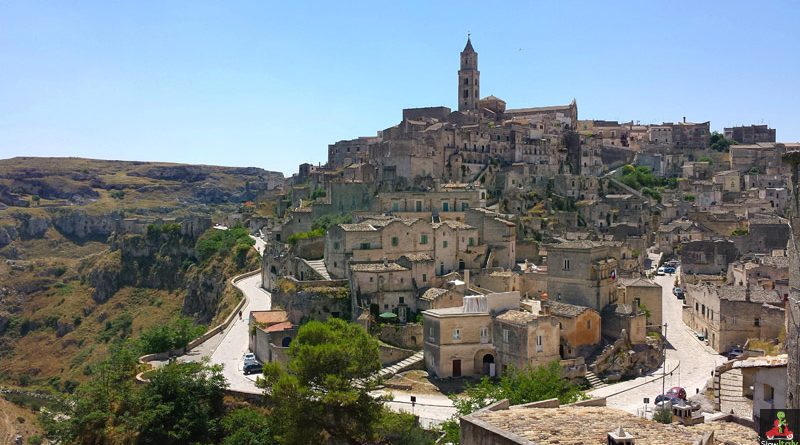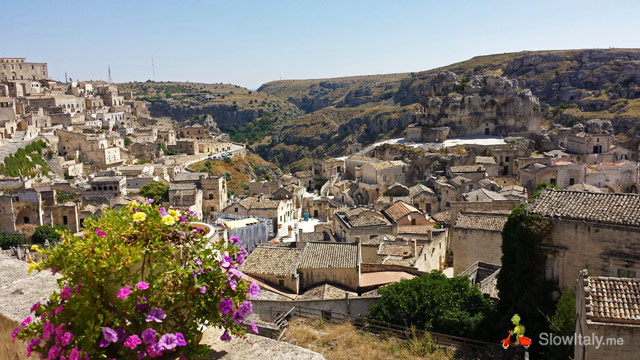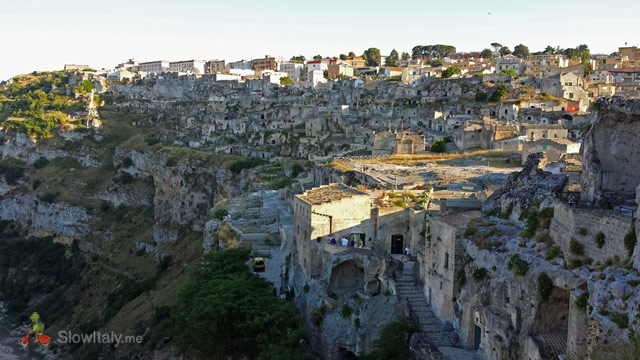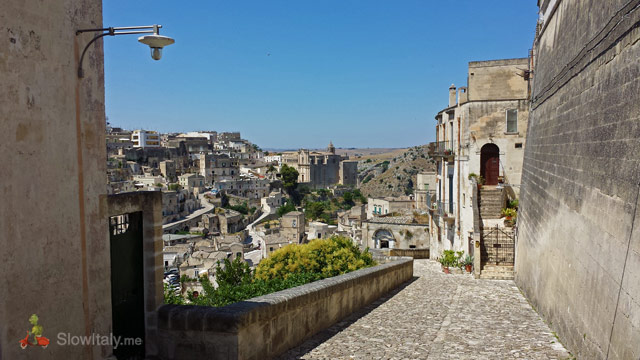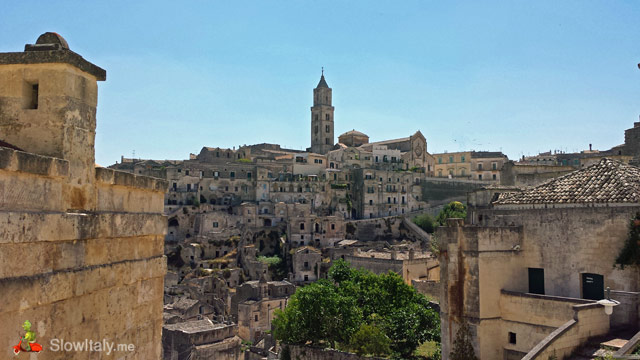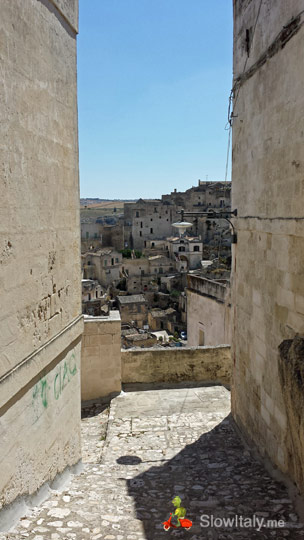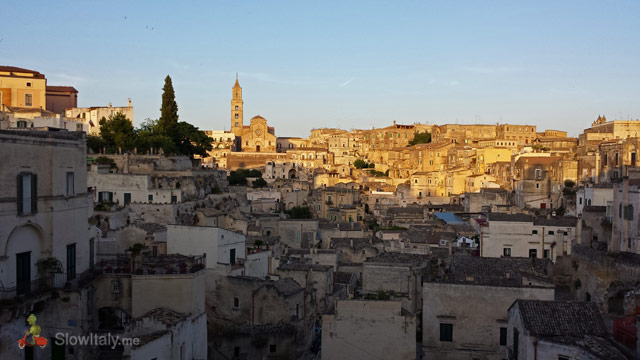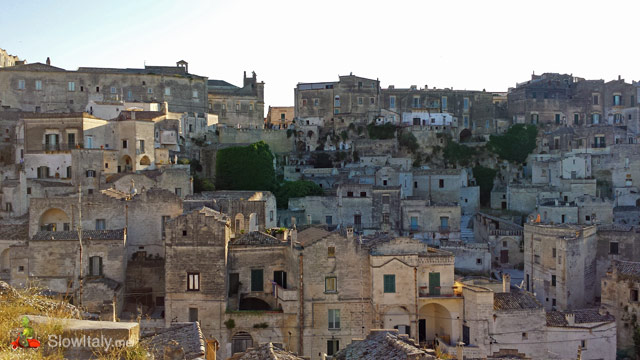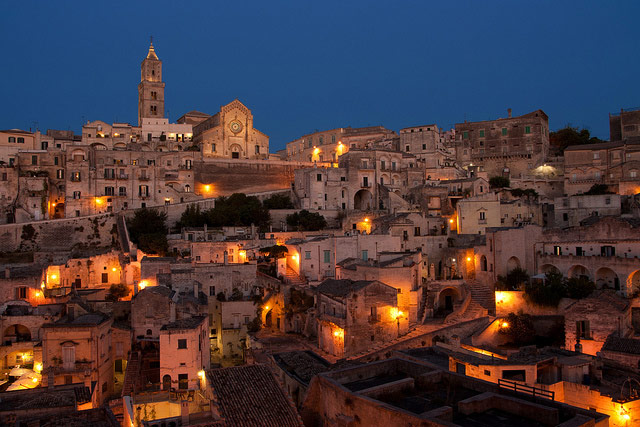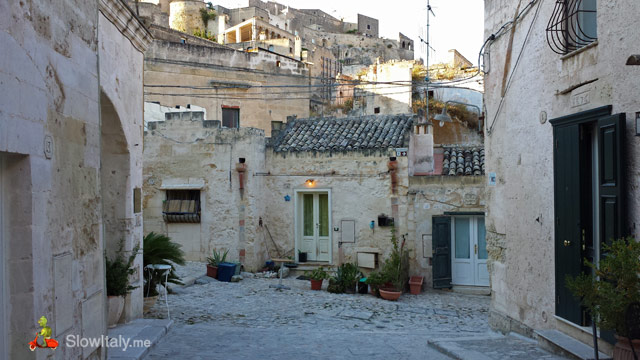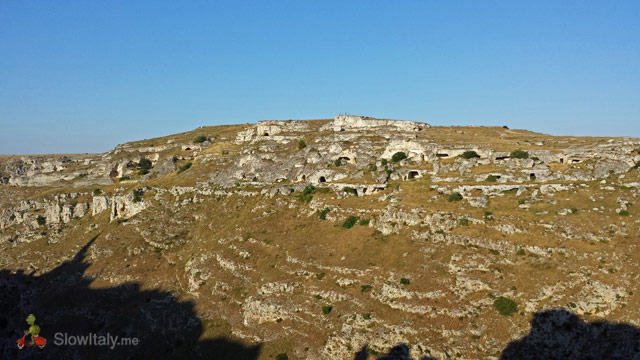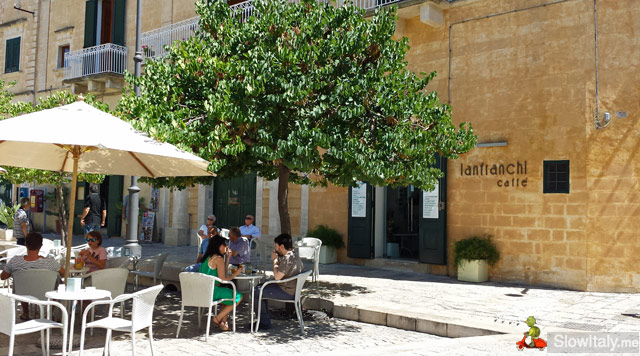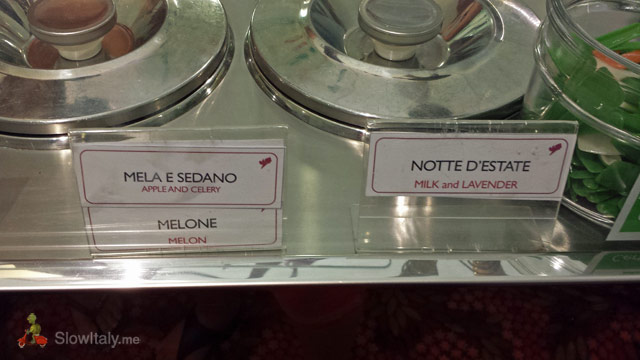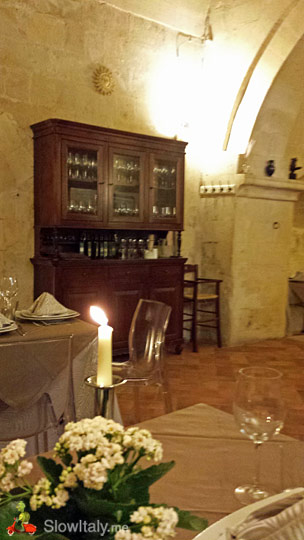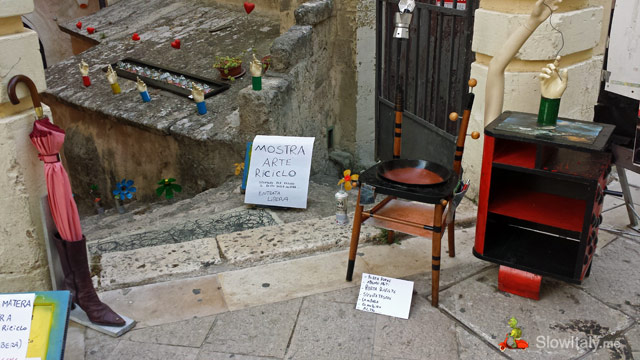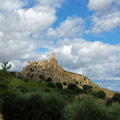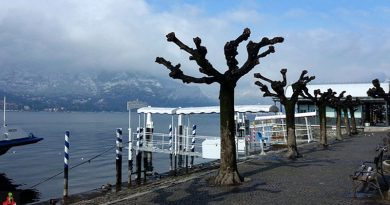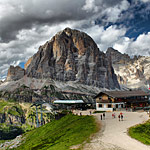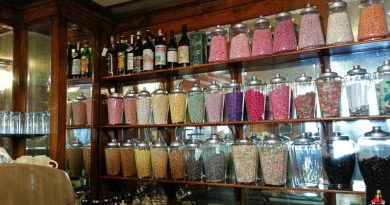Matera, the unique underground town
The town of Matera is truly unique in many ways. Once a forgotten and neglected city it is now one of the most surprising cities of art to visit. It is also one of the oldest towns in the world that can claim to have been continuously inhabited for more than 10,000 years!
Even more surprising is that the original town planning pattern has remained virtually unchanged; an urban planning that literally fades into the landscape, and where the man-made rock dwellings can hardly be distinguished from the natural caves.
Known also as la Città Sotterranea (the Underground City), Matera is probably also the only town in the world showing such a surprisingly homogeneous and beautiful entity between the most archaic, troglodyte structures and the modern, refined design of the newly established hotels.

But that’s only the top of the rock. The devil is in the details…
Matera is the second largest city of the Basilicata region in terms of population and the largest city in terms of area. It was once even the capital of the region and seat of the Royal Court, during the Kingdom of Naples from 1663 to 1806.
The town consists broadly of two urban areas, the troglodyte settlements, known as the Sassi of Matera, and in the center, inside the town walls, the Civita a large area that developed from the 15th and 16th centuries on and now forms the more modern, albeit historically also significant, part of the city.
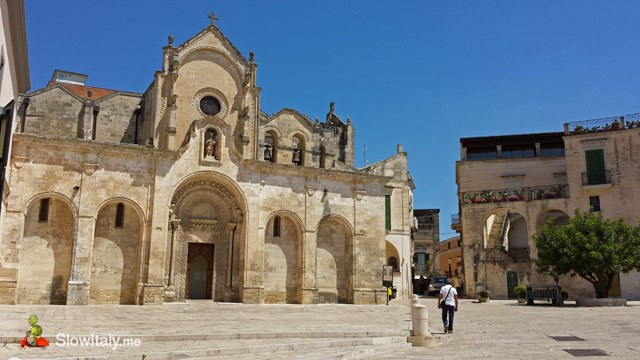
The Sassi consist of two rioni: the Sasso Caveoso and the Sasso Barisano.
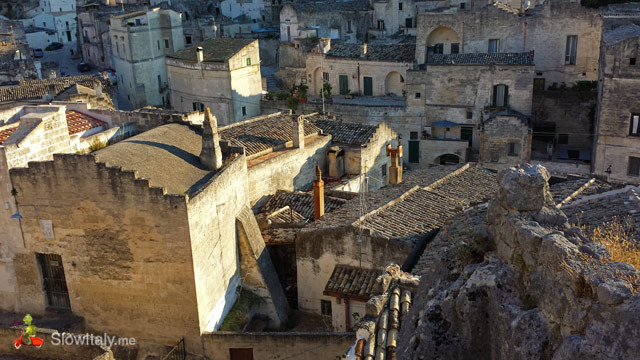
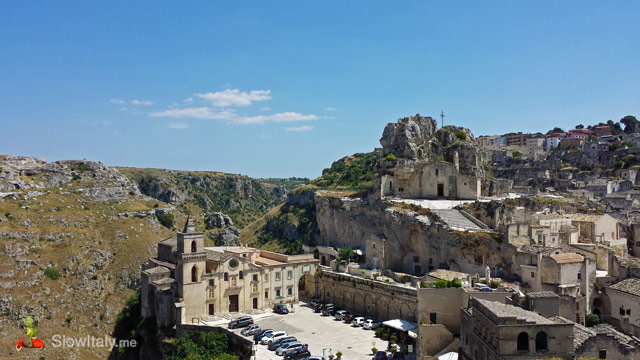
The Sassi of Matera are one of the oldest human settlements in the world that have been continuously inhabited since Neolithic times, second only to Petra in Jordan. Besides, both cities are also etymologically related, as both “Petra” and “Sasso” mean “stone”. Settlements in the area of Matera even date back to the Paleolithic. The original and oldest clusters of dwellings were carved into the tufaceous rock and predate many of the more famous antique sights that you may visit in Italy.
Matera is definitely a place you have to “earn”. As one enters the Sassi, the first impression is that of an apocalyptic landscape, with all those seemingly crumbled and abandoned houses and dwellings carved into the bare rock stone. Not surprisingly the Sassi have been used as a set for many films, but …more about that later.
However, as you progress into the Sassi and your eyes and mind get accustomed to the new landscape, you start discovering a treasure of small, beautiful details and this is also when you start realizing that there is more order and organization in this apparent chaos than you would have ever imagined.
An important feature of the landscape is the light. Under the crisp summer light, the Sassi take a magnificent golden glow, while under a greyer sky, they may get a more terrifying, metallic-cold look. Needless to say that the view of the Sassi is most impressive at dawn and dusk.
At night the town turns into a giant, magnificent presepe (Nativity crib), which can be admired from the different belvederes in the center and outside of town.
Matera passed under the domination of the Normans in the year one thousand, then the Swabians and the Angevins in the 11th and 14th centuries respectively, but the successive waves of invasion did not significantly change the lay-out of the town. During the 15th and 16th centuries the town became royal property. The rural classes continued to live in the Sassi while the nobility had their houses built in the higher part of the “Civita”. At that time, a new square, the Sedile square, was built outside the town walls in the place of the ancient Agora, which moved the center of town from the Cathedral’s square, until then the heart of the feudal and religious power, to this new square representing the new political and commercial center.
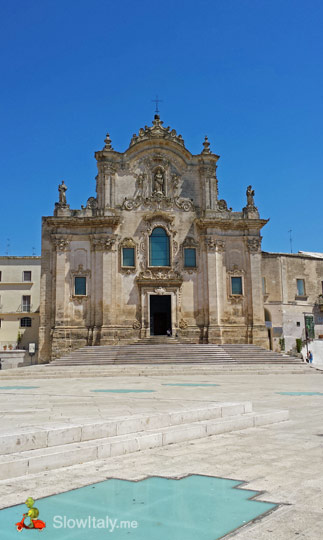
It is surprising to think that the Sassi went from being a cause of national shame to a UNESCO World Heritage Site and the European Capital of Culture 2019. In 1951, after a visit of the then Prime Minister Alcide De Gasperi, the living conditions in the rock dwellings of the Sassi were considered so unhygienic and shocking, that the authorities decided to relocate the local population to newly constructed houses, leading to the desertion of the ancient center.
However, in about 40 years the perception of these troglodyte cave houses changed completely. Declared a UNESCO “World Heritage Site” in 1993, the town of Matera also competed against prestigious towns such as Ravenna, Lecce, Siena, Perugia and Cagliari for the title of “European Capital of Culture 2019”. Clearly, the reason Matera won was not just because of esthetic or historic considerations, but also for some more profound, nay ethical reasons.
Indeed, the town has always been an important place for experimentation and innovation. The Sassi, which may at first sight appear as simple and rudimentary, contain, in fact, authentic wonders of technology, such as a state-of-the-art water supply system that was based on the collection of the water in large tanks carved into the rock from where it was then brought down for distribution to the community.
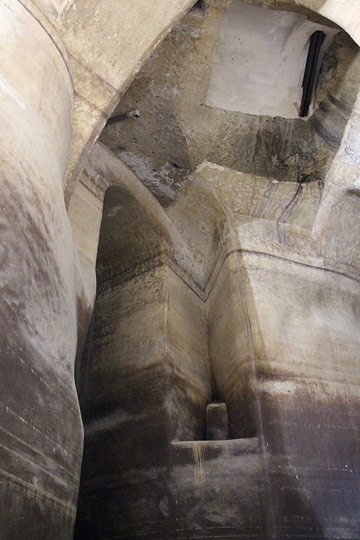
This ancient hydraulic system is one of the most ancient and best conserved examples of bioarchitecture in the world. A type of primitive settlement that actually very advanced, while perfectly adapted to the underlying geomorphological setting and its ecosystem. The inhabitants of Sassi also had a forerunner of our modern refrigerator, called neviera, which consisted of tanks carved into the rock where snow was collected during winter and food was stored during summer.
Since 2007, the definition of the Sassi of Matera now includes the Park of the Rupestrian Churches, also known as Parco archeologico storico-naturale delle Chiese rupestri del Materano, or Parco della Murgia Materana. The Park covers the entire area of the Murgia Materana and includes the canyon-like area of the Gravina di Matera. The Parco della Murgia Materana was instituted in 1990 by the Basilicata region in order to safeguard and protect the archeological site of the Murgia Materana and the heritage of the rock dwellings and the rupestrian churches.
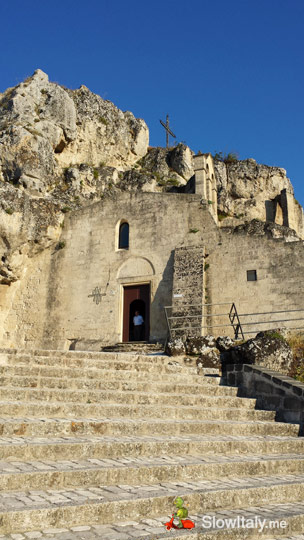

There are about 150 churches disseminated within the territory of the Murgia Materana, dating back from the arrival of non-Latin monastic communities from Asia, who settled in Basilicata and Puglia, in order to avoid the persecution unleashed against the Church by the Byzantine iconoclast emperor Leone Isaurico around 726. These communities were experts in troglodyte architecture, which explains why this type of dwellings of Byzantine influence flourished in this part of Italy.
As mentioned previously, the town attracted great filmmakers and artists. Among the films set here are, The Passion of Christ by Mel Gibson in 2004, The Nativity Story by Catherine Hardwicke in 2006, The Guernica Tree by Fernando Arrabal in 1975, Mary by Abel Ferrara and King David by Bruce Beresford and with Richard Gere in 1985. Carlo Levi, the Piemontese writer and activist, spoke about a the “aching beauty” of Matera in his 1945 book Christo si è fermato a Eboli (Christ stopped at Eboli), a memoir of his time spent in exile in Lucania, now called Basilicata.
What to see
Strada Panoramica dei Sassi: this panoramic streets runs round the cathedral rock and allows you to enjoy a variety of views of the two valleys of the Sassi. Take the flight of steps after n° 134, which leads onto Mt Errone. On top of it stands the church of S. Maria de Idris, almost entirely carved out of rock. From the top you get one of the most amazing views in Matera. From the Church you enter another small underground church with frescoes in the 11th century Byzantine style.
Don’t miss the Church of S. Donato, one of the architecturally most impressive churches in the town.
Another interesting Church is S. Lucia alle Malve, founded around the year 1,000.
To see what a real peasant dwelling was like before the “Sassi” of Matera were abandoned, you can visit a typical cave dwelling with furniture and tools of the time in the Sasso Caveoso.
Where to stay
I highly recommend to spend at least one night in Matera, because the view of the Sassi at night is something that is not to be missed. I can’t even begin to describe it here; you have to see and experience by yourself.
We stayed at Cave hotel Antico Convicino Rooms & Suites that recently opened (in April 2014). The hotel is beautifully located within the Sassi, but at the entrance of it, so still within close walking distance of all the restaurants and main shopping streets of Matera center, which makes it really a place of choice. There are just a few hotels located inside the Sassi, but there is also an ample choice of B&Bs. This hotel, however, is something out of the ordinary where the original cave structure has been beautifully decorated with minimalist design furniture, but in total respect of the original structure.
We booked a room with separate bed for our son and ended up having a 90m2 suite, including a huge, separate lounge where to relax, a beautiful “cave-dressing”, and a smaller, open cave for our son within our larger cave, not to mention the beautiful “cave-bathroom”.
The owner and staff were all extremely friendly and helpful and the place itself, is well, unique!
Where to have a coffee, an aperitivo or a gelato
Lanfranchi caffe: Piazza Ridola, good coffee, excellent pastries, nice terrace for people watching at aperitif time, but the absolute plus of this place is the small terrace at the back offering the most stunning views over the Sassi.
Laboratorio di Gelateria Artigianale I Vizi degli Angeli, excellent artisan gelato with some surprising tastes, such as apple and celery or milk and lavander.
Where to eat
One of our favorite restaurants in the Sassi of Matera is Osteria Pico. Try their antipasti misti and their strozzapreti con peperoni cruschi, caccioricotta e mollica di pane fritta.
Another restaurant worth trying is Miseriaenobiltà in the center of Matera, for its beautiful terrace overlooking the Sassi. The terrace can host only two to three tables of two or three persons, so if you want to enjoy the breathtaking view, make sure to book in advance.
Also recommended for their beautiful atmosphere and great food: L’abbondanza Lucana and Soul Kitchen.
Where to see unusual (modern) art
Parblè Art-Eco: a very creative young artist who recycles everyday objects into design lamps, collage-paintings or pieces of furniture. Apart from the fact that his objects are truly artistically interesting, the even more surprising and inspiring part is that the author makes it a point to sell his art at cost price, charging only the price of the material used and the hours spent to create the piece of art. The reason I wanted to highlight this artist’s work, is that I have found that his approach is truly representative of the spirit you encounter in the whole of Basilicata: innovative, inspiring and responsible.
Where to make beautiful photos
There are several belvederes throughout the modern city from where to take photographs of the Sassi. There also beautiful views of Matera at about 4km following the Altamura road, then the Taranto road making a right turn to follow the signpost chiesi rupestri (troglodyte churches).
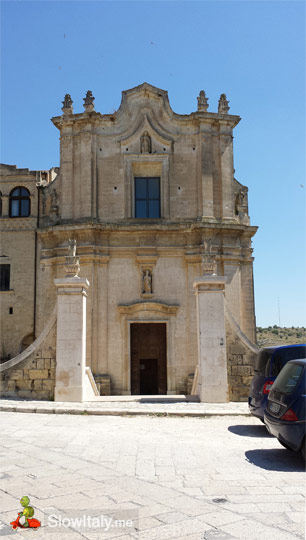
The views from the Church of Santa Maria de Idris and from the church and convent of Sant’Agostino are among the most stunning of the Sassi.
You may also like:
The mysterious ghost town of Craco, Basilicata
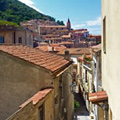
Maratea, the charming little town with 44 churches in Basilicata
Photo credits: all photos © Slow Italy, except (from top to bottom): Blue hour sunset by Tango7174; cisterna by Carlo Mejia Greene; Matera by night by Federico Moroni;

